The neuroscientist shared the stage with a comedian and a drummer. Two artists led a participatory landscape painting project. The CEO donned a mascot costume and hurled stuffed globes into the audience as arena rock blared.
Among the many things attendees have learned from Rare’s BE.Hive conferences, it is to expect the unexpected.
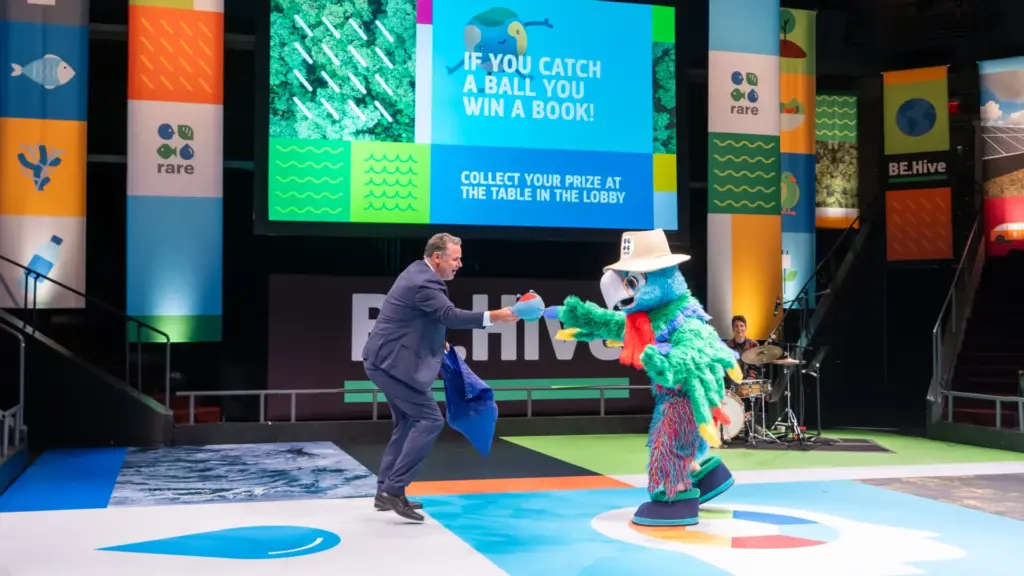
On Tuesday, June 11, Rare hosted its fourth BE.Hive conference at Arena Stage in Washington, DC. The event brought together behavioral scientists, environmental practitioners, foundation officers, sustainable brand professionals and climate-conscious leaders from a range of sectors to explore people-centered environmental solutions and the measurable impact they can have. Nearly 300 people spent the day listening to spark talks, laughing at witticisms, and reflecting on what the community at the intersection of behavioral science and conservation has learned since the first BE.Hive gathering in 2019.
The power of behavioral science
BE.Hive boasted presentations from leading voices and rising stars in the behavioral science community, who provided hopeful and wide-ranging perspectives on how behavioral science is helping to address issues like climate change.
“Behavioral science brings that bridge between what we know is important and our ability to scale things, and figure out how we actually get it done,” said Matt Wallaert, author and founder of consultancy BeSci.io.
“Individual changes can aggregate into systemic changes,” said Michael Hallsworth, Chief Behavioural Scientist with the Behavioural Insights Team North America. “Maybe there are alternatives we are not thinking about that could have a better impact, and I hope behavioral science is a way of unlocking those alternatives.”
Northeastern University’s Sara Constantino pushed back against narratives that suggest we need structural, systems change and not individual behavior change.
“This is a false dichotomy,” sand Constantino. “We need both. These are integrated. You can’t have systems change without behavior change.”
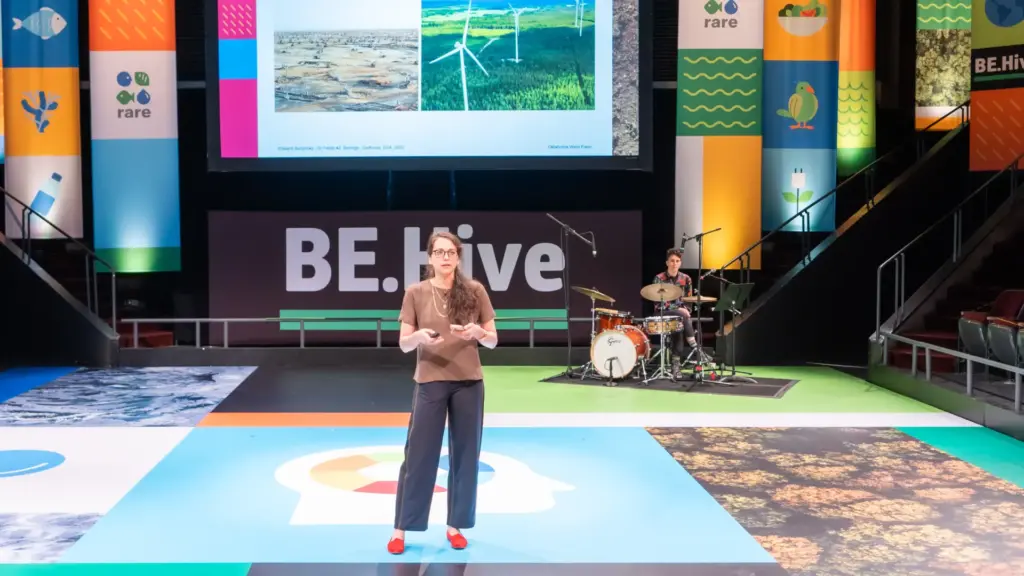
Crystal Hall, professor at the University of Washington, agreed.
“When we think about environmental and conservation issues, it’s important to focus on systems and structures and institutions, and at the same time, a focus on individual behavior is so important for generating the momentum we need to move those institutions and systems into action,” said Hall.
You can’t have systems change without having behavior change.” – Sara Constantino, Assistant Professor, Northeastern University
Evidence-based impact
The underlying theme of BE.Hive 2024 was the evidence-based case for applying behavioral and social sciences to environmental challenges.
Google’s Chavanne Hanson discussed choice architecture and how re-designing the choice environment in food systems could result in significant reduction in food waste. Louise Bruce of The Recycling Partnership reported on the impact of mailer campaigns on household recycling, while Delterra’s Jeremy Douglas shared insights from on-the-ground recycling campaigns in Latin America and Indonesia.
It’s not just about the science. It’s not just about the policy. But what are people going to do in response to the science and the policy?”- Priya Shyamsundar, The Nature Conservancy
After presenting about a campaign to reduce leopard poaching in southern Africa by normalizing synthetic fur, Panthera’s Tristan Dickerson identified key elements for effectively helping communities shift behaviors.
“Understanding. You have to form partnerships. Be part of their side,” said Dickerson. “It’s not your idea. It’s their idea.”
A common theme across the speaker line-up was to consider the human consequences of decisions. Priya Shyamsundar, Lead Economist with The Nature Conservancy (TNC), encouraged policymakers and others interested in environmental change to consider the behavioral intentions of people.
It’s not just about the science. It’s not just about the policy. But what are people going to do in response to the science and the policy,” said Shyamsundar.
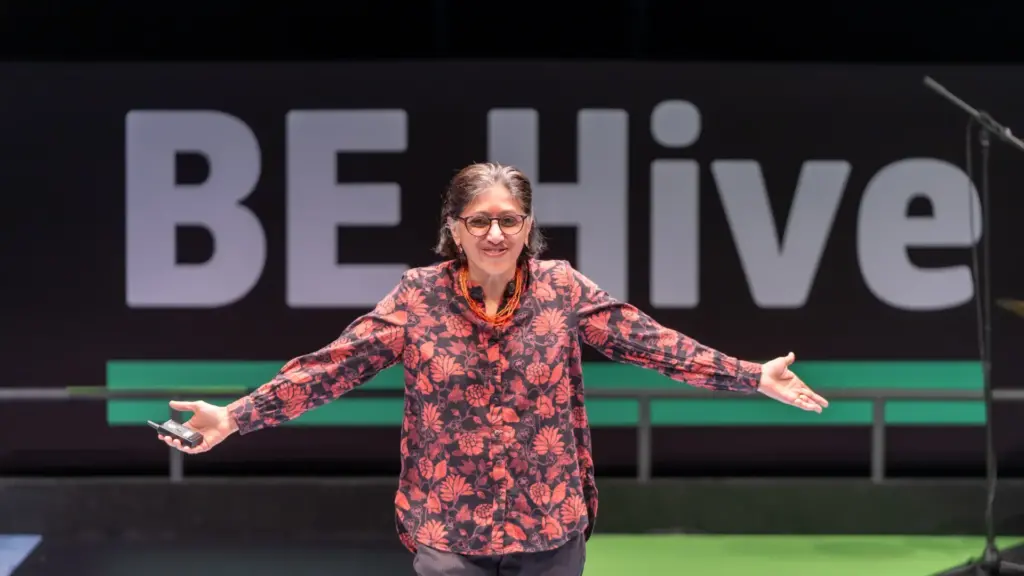
Measuring impact
The effectiveness of behavior-based interventions cannot be determined without measurement and evaluation. That was the message from Richard Margoluis, Chief Adaptive Management and Evaluation Officer with the Gordon and Betty Moore Foundation.
“Monitoring and evaluation is one of the most basic, most important ingredients of good conservation,” said Margoluis. “Most conservation interventions have some behavior change component. It’s really important to understand if what we’re doing is actually achieving the results we want to achieve.”
Inspiring leaders take the stage
Throughout the day, inspiring leaders from NGOs, advocacy organizations, and even heads of state addressed the audience. The Nature Conservancy CEO Jennifer Morris and Kwolanne Felix of Black Girl Environmentalist talked about building a broader, more inclusive environmental movement.
“I think the question for environmental organizations isn’t just, how do I bring communities of color or poor communities into the movement. It’s how do I catch up?” said Felix. “As you invest in young climate leaders, climate leaders of color, climate leaders from local and underrepresented communities, invest not only in their stories but also in their solutions.”
View this post on Instagram
WildAid President John Baker emphasized how important listening to impacted communities is to the behavior change process.
“It’s not for us to tell them what to think,” said Baker. “It’s for us to listen, hear, and understand that they do have an interest, belief, or tradition that reinforces conservation, and how to tease that out and let them be the ones to say that to their community.”
Carlos Alvarado Quesada, the former President of Costa Rica and member of Rare’s Board of Trustees, spoke about the power of individual change to drive large-scale change we need to solve challenges like climate change.
“Change always starts either by the individual or a small group of people,” said President Alvarado. “Whenever I check in history, there is not one change that started structurally. It doesn’t have to be from the top; it can be ideas people adapt or adopt in the communities and others start to see that and copy it. It starts to expand and that drives change.”
Art at the heart of it
If any event ever proved that success is an art and a science, BE.Hive was it. Interlacing the behavioral and neuro-scientists were artists who infused the day with color, light, and hope.
“The idea we’re doomed, that the planet is broken, doesn’t sit well with me,” said artist and author, Oliver Jeffers, who read from his latest book, Begin Again. “We’re better than that. We will adapt. We can adapt. We can see it differently. One of the strongest tools in my toolbox as an artist is the ability to shift perspectives.”
In the theater atrium, Takeyce Walter and Nicola Russell, two New York-based artists, facilitated a participatory art project with conference attendees helping to create a vibrant landscape.
“Art is a tool that can be used to communicate anything,” said Walter. “Climate change being something that is super complex, art helps to make it personal.”
View this post on Instagram
Caty Borum of American University’s Center for Media & Social Impact presented on comedy’s ability to help people broach taboo, technical or complex topics like climate change.
“Comedy can serve as a pretty great translator,” said Borum. “Comedy provides catharsis and resilience. Comedy is a superhero when it comes to engaging people in climate issues and other wicked problems.”
“Art is not decoration,” said Jeffers. “Almost as a last resort, artists have been turned to by this climate movement. We should be the first.”
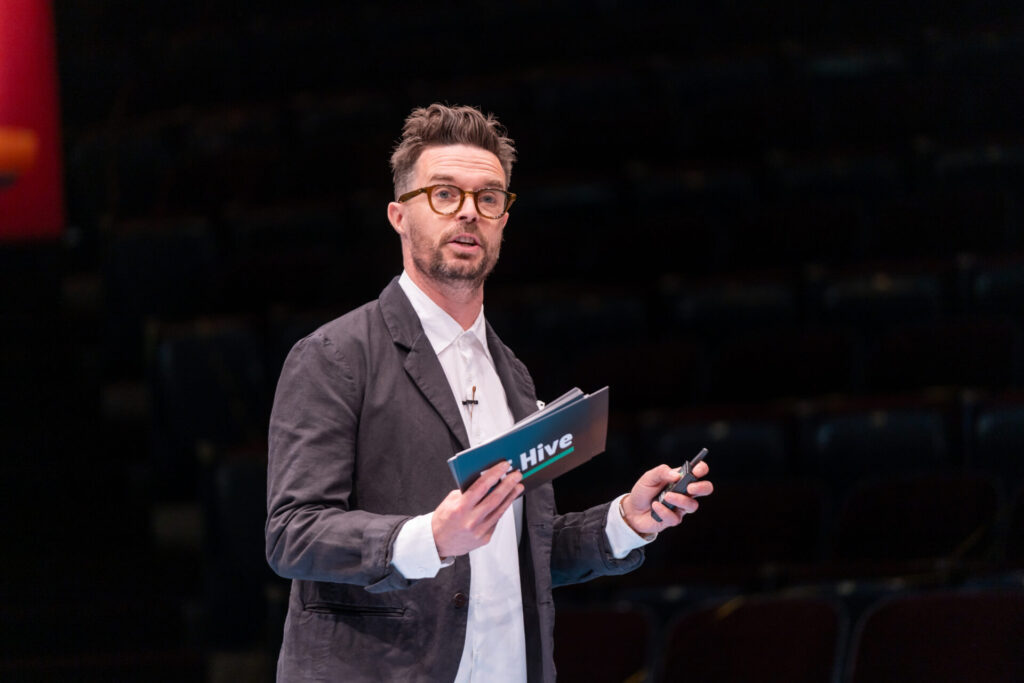
An Un-Convention
When speakers and attendees weren’t talking about the issues, they were admiring the unique aspects of BE.Hive – from the agenda, to the activities, to the host (comedian Nick Thune), to how the stage was set.
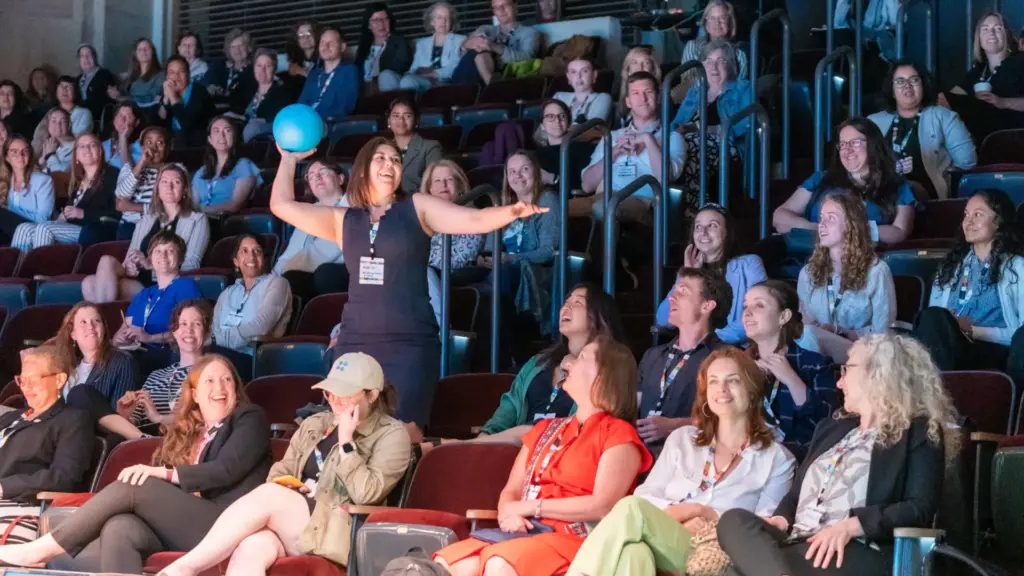
“It makes you wonder why every conference isn’t like this,” said one satisfied attendee.
“The stage was beautiful,” said TNC’s Shyamsundar. “I’ve never been on a stage like that!”
“You have these eclectic elements, it tells you this is an eclectic organization,” said President Alvarado. “But one that finds solutions, perhaps in a very out-of-the-box way. But that’s what we need.”
View this post on Instagram
“The idea we’re doomed, that the planet is broken, doesn’t sit well with me. We’re better than that.” – Oliver Jeffers